The key stages in the production process of our wire ropes
Raw Materials – A good rope comes from good raw materials
The careful choice of selected and reliable suppliers, able to offer raw materials meeting precise quality standards, constant over time, is an essential prerequisite for producing well-made, high-performance ropes.
Quality controls – Attention to detail
The first quality checks are carried out as soon as the raw material reaches our plant. Before being admitted into the production cycle, the goods are inspected, measured, weighed and tested for conformity to requirements and suitability for processing.
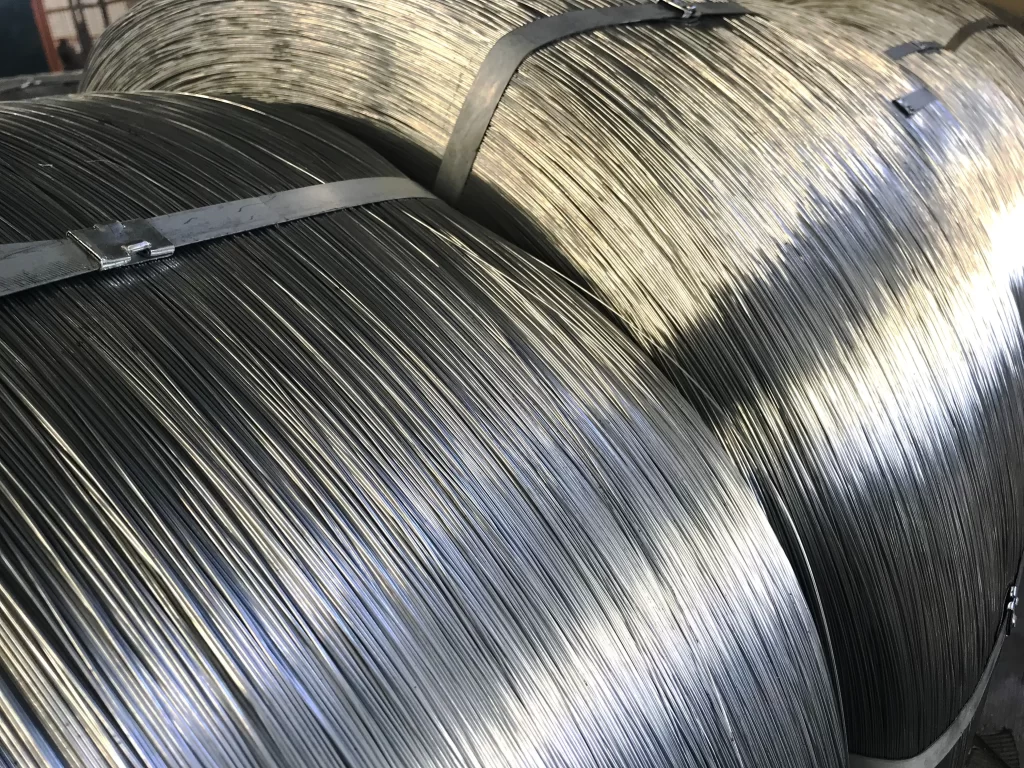
Finished wire hanks
Production process – Step by step, the wire rope takes shape
The actual production cycle is made up of various stages that follow each other through different operations, machinery and departments, and is managed, monitored and controlled by experienced supervisors and specialized metalworkers. In our industry, despite the fact that the production lines are now fully mechanized, the human eye, hand and experience are still necessary and valuable requirements for a successful product.
The production of our steel ropes begins in the wire drawing department. The drawing process¹ is the first and most delicate stage of processing, as it gives the steel wire the mechanical characteristics that will later determine the quality of the ropes.
From the drawing of the raw material, finished wires of different diameters are obtained, which are then used to create strands of various constructions and thicknesses. In order to reduce its cross-section to the required diameters, the wire is forced through drawing dies with holes of progressively decreasing diameter.
This is achieved in several passes through dedicated machines called drawing machines.
At each stage of the drawing process, the wire undergoes a series of chemical and mechanical tests and analyses to check its quality and efficiency. The mechanical tests consist, for example, of checking the nominal diameter, detecting the tensile strength and determining the wire twisting and bending performance. Chemical tests role is to check the weight, adhesion and uniformity of the zinc coating.
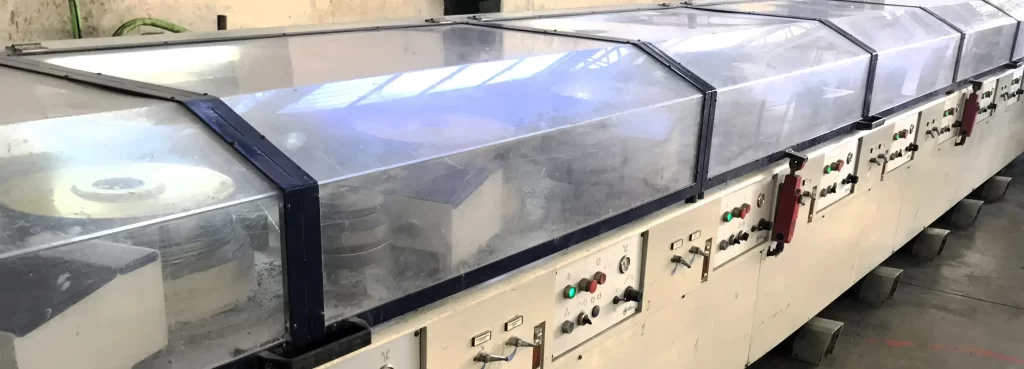
Drawing machine
The drawn wire, packaged in hanks, is then collected on reel and sent to the rope department, where it is used to make wire strands. The strand is in fact a set of elementary wires twisted together, and the steel rope is made up of several strands wound around a central core, textile or metal, by means of pre-forming and cordage operations.
The preforming process gives the strands their helical shape and takes place before they are wound around the central core, i.e. before roping.
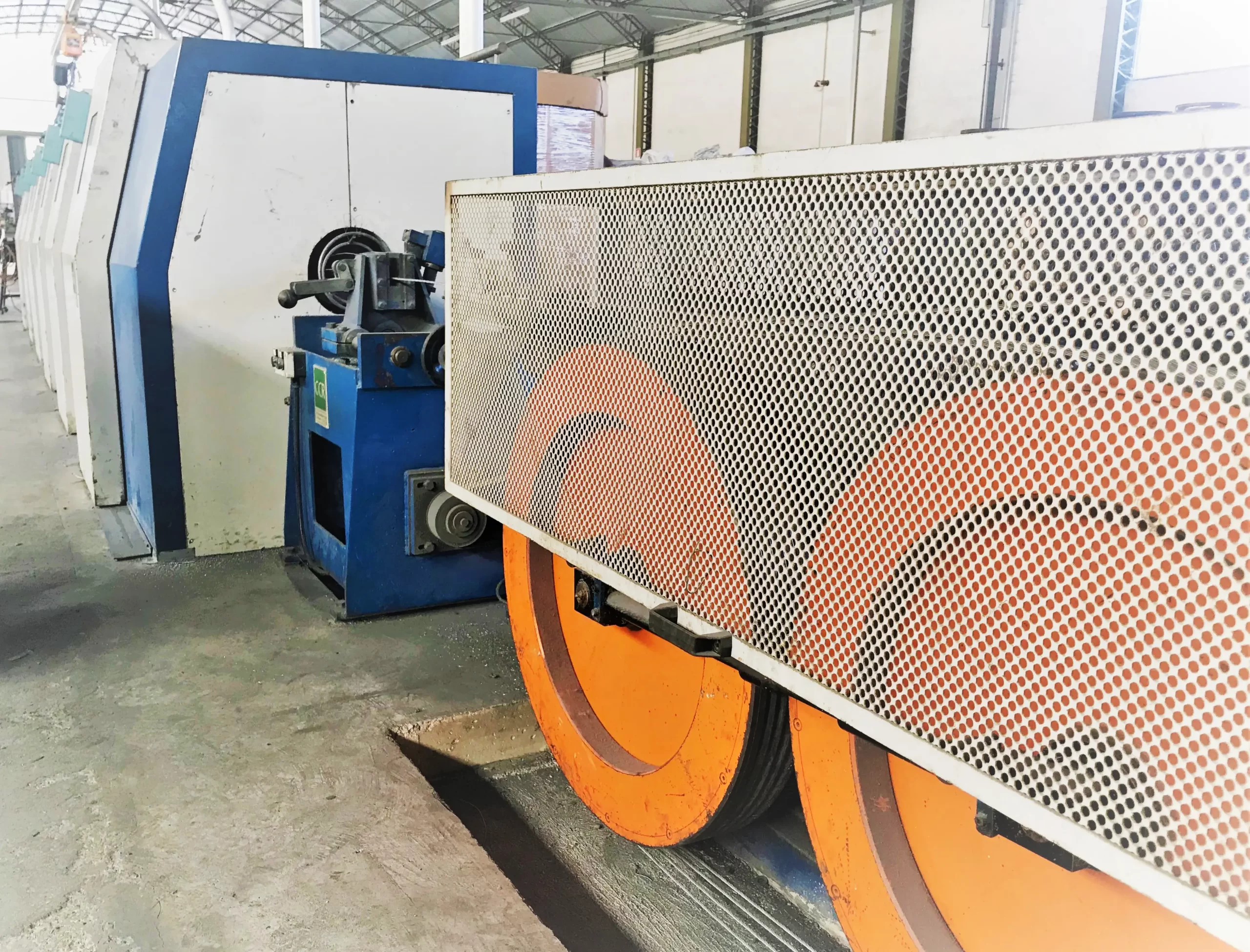
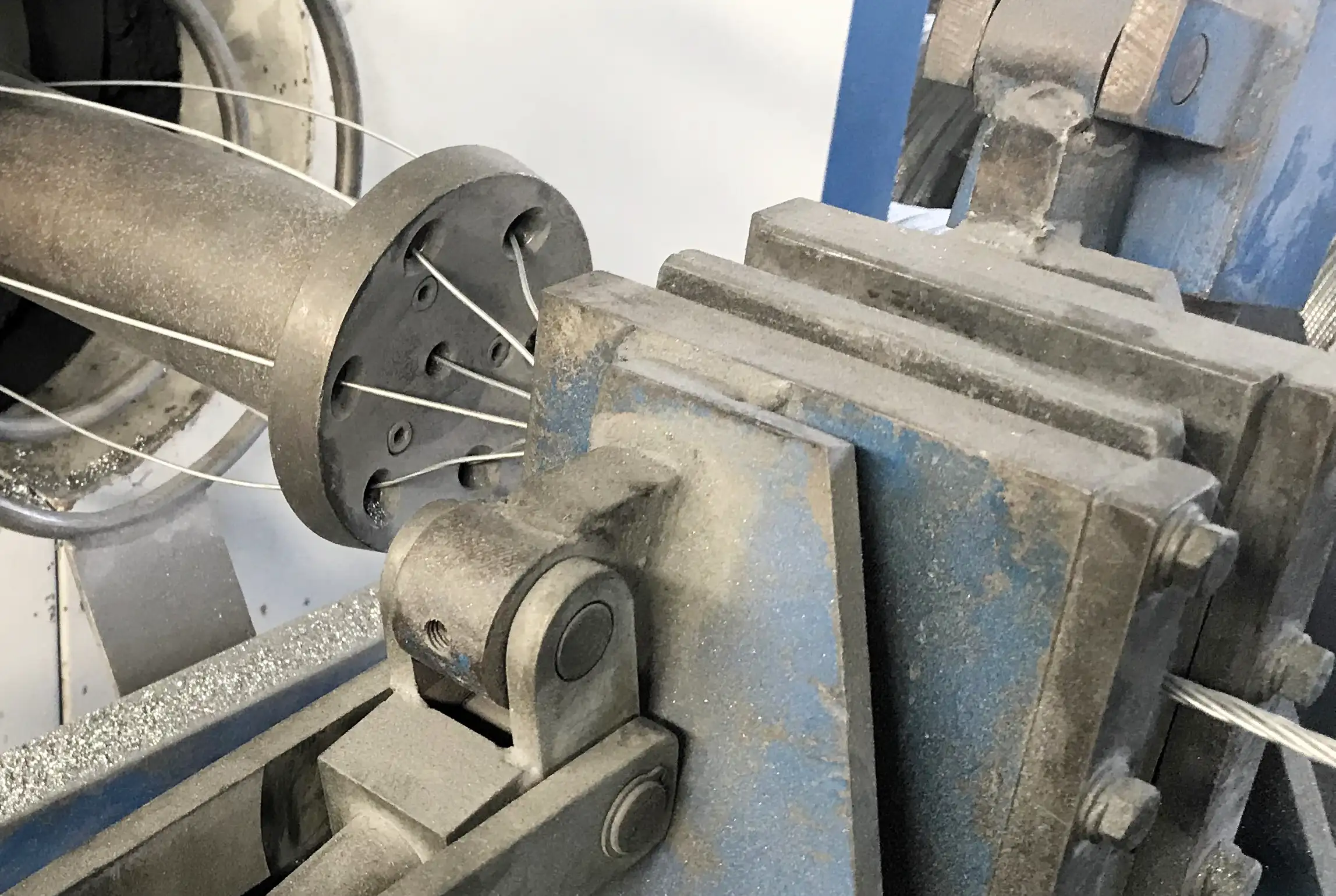
Once the ropes leave the roping department, they are weighed, cut to length, packed in rolls or spools and finally labelled and packaged.
At this point, the ropes are ready to be delivered or shipped to the customer.
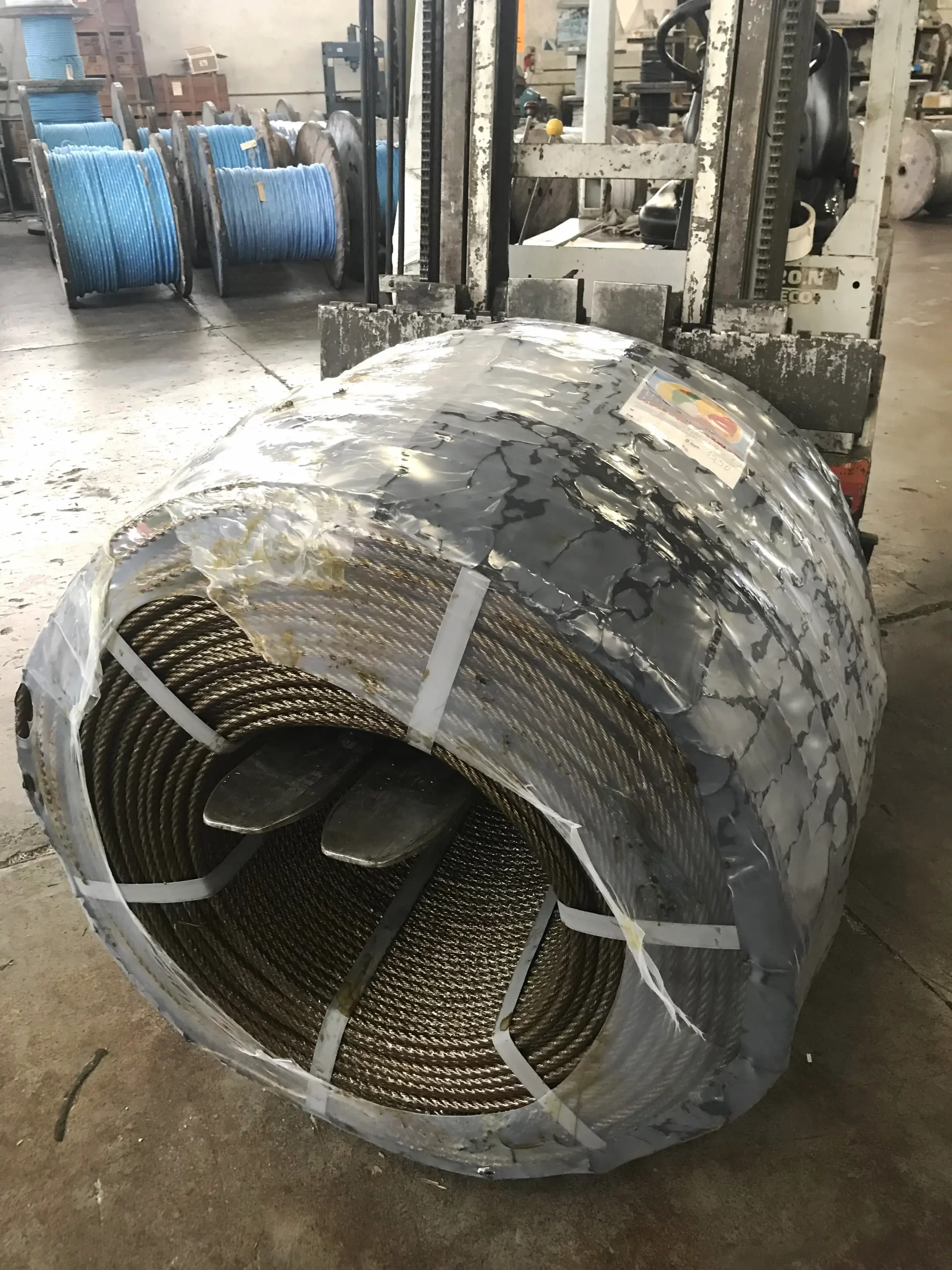
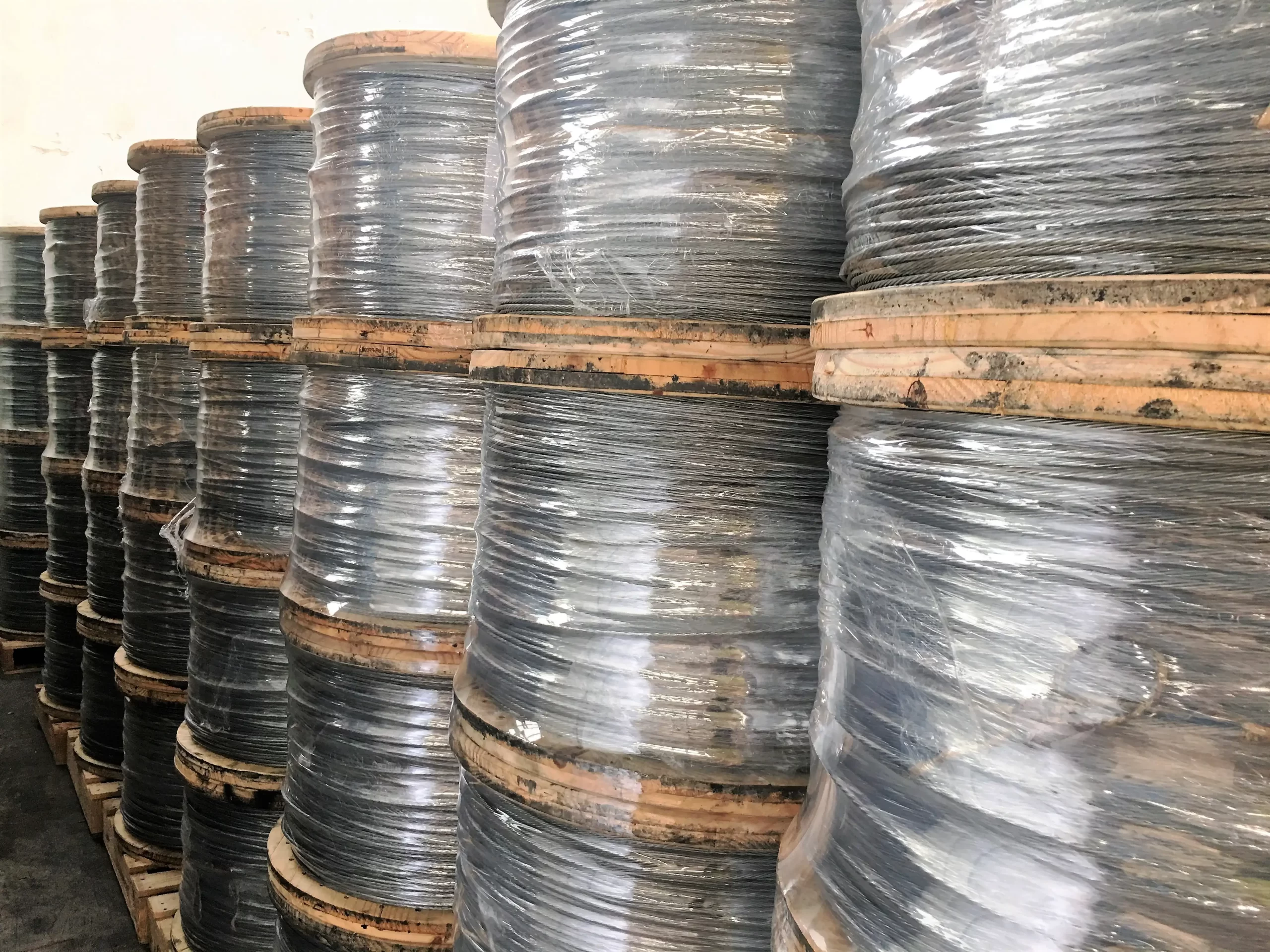
Grease – An additional protection
Some ropes need to be greased internally and/or externally with special grease. This operation, which takes place during the roping process, has a protective and/or lubricating function, i.e. it improves the rope’s performance and extends its service life.
Particularly in the industrial fishing sector , the grease coating provides the rope with extra protection, in addition to that already offered by the rich galvanization, against the aggression of external atmospheric agents. In fact, fishing ropes operate in constant motion and are subject to constant pulling and tearing in one of the most hostile environments, the marine environment. Both at sea and on board, fishing ropes are subjected to an extremely wearing combination of conditions and factors, due to the concomitance of adverse elements, such as exposure to salty air and water, sun, temperature changes. All that while running on pulleys, winches and other components that are not always adequate, clean and/or in good condition.
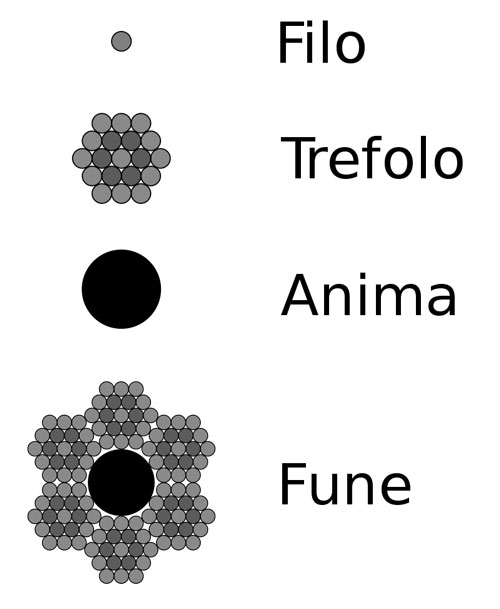
The construction – The right wire rope for each application
The choice of rope construction, i.e. the combination and diameter of wires and strands making up the rope, depends on the final use of the rope itself and on the operation to carry out. In fact, ropes are used in many different applications and sectors, so only knowledge of the specific conditions of use, the stresses and the nature of the work to which they will be subjected will allow the choice of the most appropriate, safe and performing construction.